24 August 2015
Though many people have hummingbird feeders, feeders alone aren’t enough to support the birds on migration. What do ruby-throated hummingbirds eat on their way south?
A study by R.I. Bertin in 1982 found that their primary food source is orange jewelweed (Impatiens capensis) shown in the photo above. Birds of North America online says:
“Overland migration in North America is nearly synchronous with peak flowering of jewelweed (Impatiens capensis), suggesting this flower is an important nectar source during this time and may influence the timing of migration.”
This month orange jewelweed is thriving by the creek and wetland in Schenley Park. That’s where I found Soji Yamakawa with his camera last week, spending many hours photographing hummingbirds before his work resumes at Carnegie-Mellon’s Mechanical Engineering Department this fall. Click on the photo above to see a slideshow of his favorite shots.
Soji and I chatted about the birds and noted there were no adult males in the group. Most adult males have left our area by the second week of August but look closely at the throats of these birds and you’ll see faint stippling or a small patch of red feathers. They’re immature males, just hatched this spring.
If you want to see hummingbirds in the wild this month, stake out a patch of orange jewelweed and watch for movement among the flowers. You’ll get a bonus, too. Rose-breasted grosbeaks forage among the stems, eating the jewelweed seeds.
p.s. That white patch just above the hummingbird’s bill is jewelweed pollen.
(photos by Soji Yamakawa)
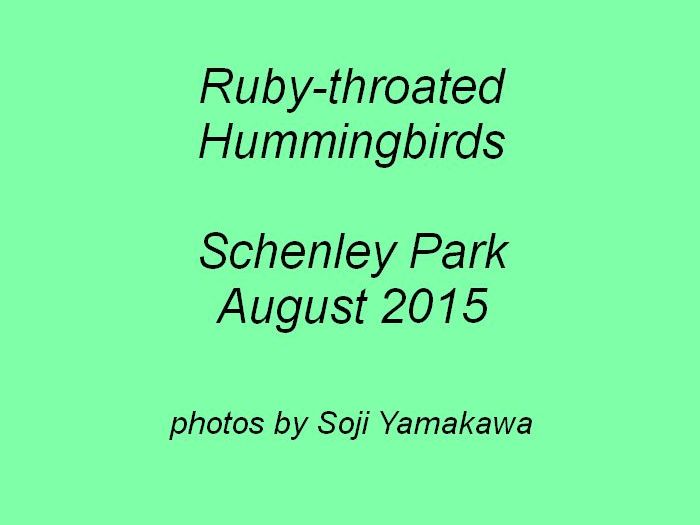


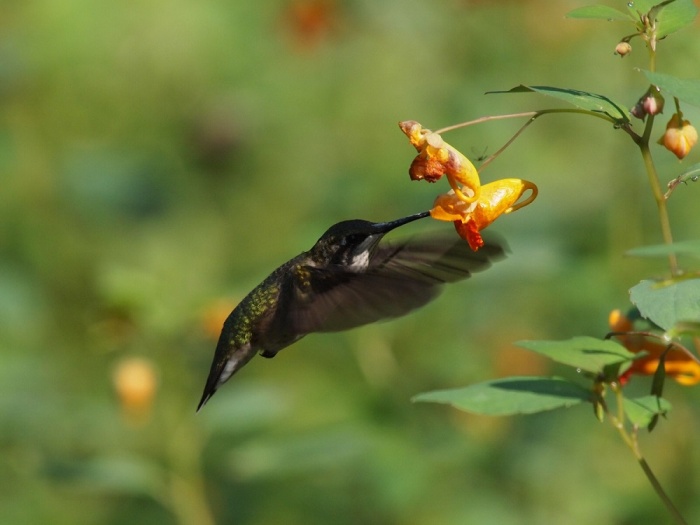
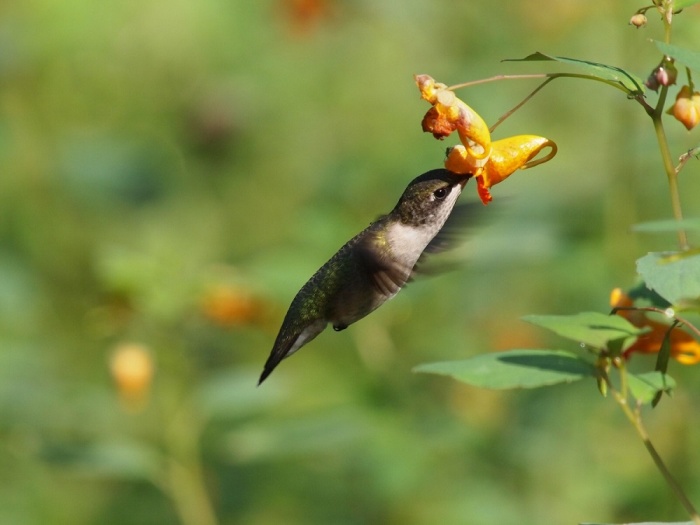
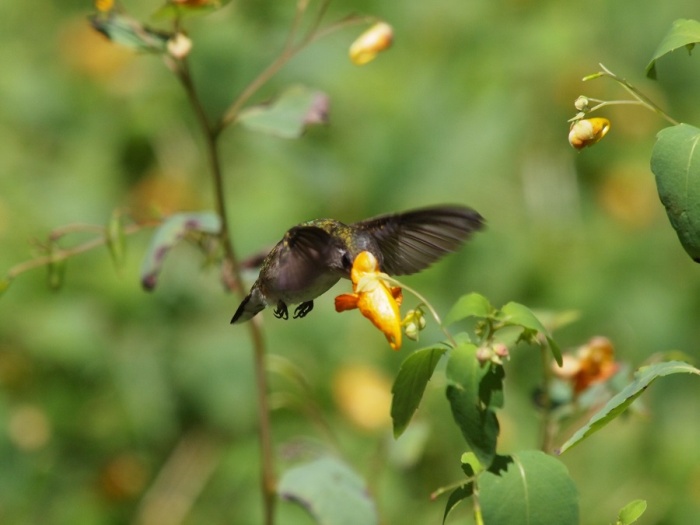
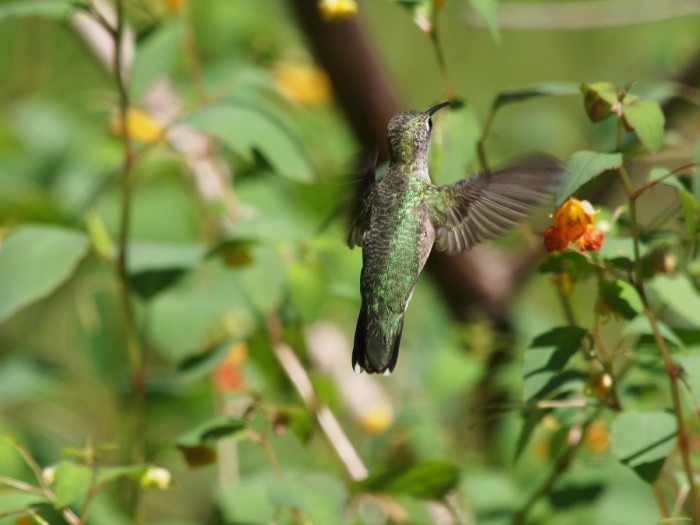
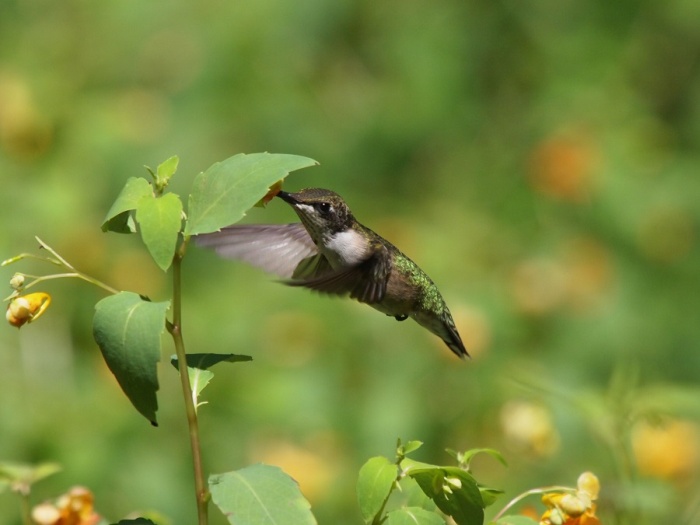
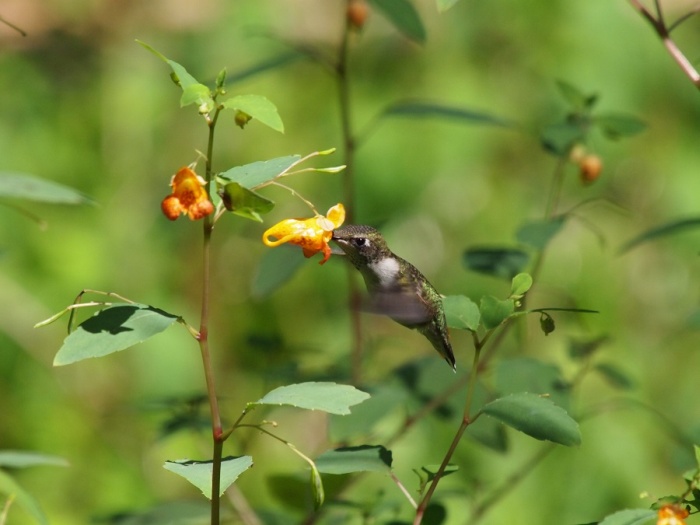
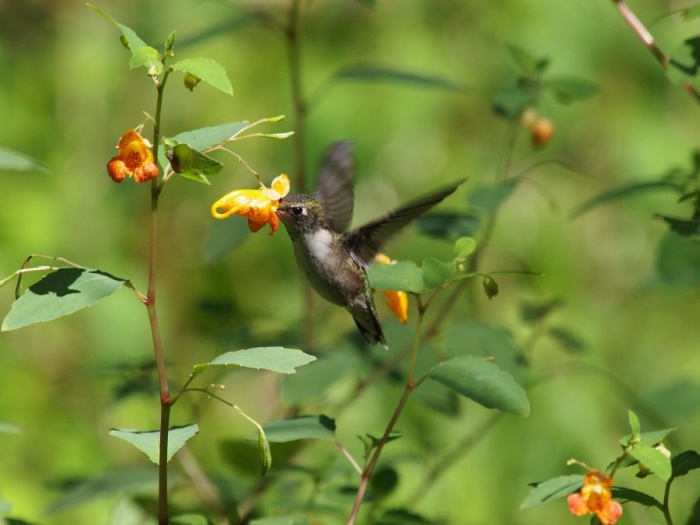

The number of hummers (and bees, of course) here in my area of Bucks County seem to have been a little sparse this year. I have not changed anything. I am going to find the orange jewelweed for next year.
Beautiful pictures of the little guys!!!!
Valarie, nasturtiums are good too. They are very attractive to hummingbirds and easy to grow.
Just found a plant (now..Mid Sept.) …I live in Lehigh county…They just finished flowering a day or two ago. – they are all over the place – and harvest the seeds. Take a baggie with you. https://www.fs.fed.us/wildflowers/plant-of-the-week/impatiens_capensis.shtml
I have a patch of great blue lobelia near my kitchen window which they seem to love.
The jewelweed here threatens to overtake us for good every summer! I haven’t seen hummingbirds, but could the jewelweed be responsible for the crazy amount of butterflies we see every year?
Melanie, I’m not sure about the butterflies. A few species do sip orange jewelweed but the plant really relies on hummingbirds to pollinate it. …On the other hand *yellow* jewelweed is a bee/butterfly plant so if you have yellow jewelweed, that explains it.
Both species of Jewelweed are browsed heavily by deer. In our yard the deer have eaten most of the Jewelweed. This is also true in many wooded areas and I wonder if the overabundance of deer adversely affects the hummers.
Dick, I imagine the deer *are* affecting the hummers. Alas!
Interesting.
As of yesterday (8/24/2015) we still have males in New Hampshire.
Janet, I’m not surprised you see them in New Hampshire. I often see male ruby-throats along the coast of Maine in September. The birds on this side of the eastern continental divide (the Appalachians) probably have a different migration timing/strategy.
If you are susceptible to poison ivy, remember where those jewel weed plots are, jewel weed can be used to treat the poison ivy rash, and the two plants often grow near each other.
I still had a male at one of my feeders yesterday (8/26) in Forest Hills.
However the females and youngsters do outnumber him.